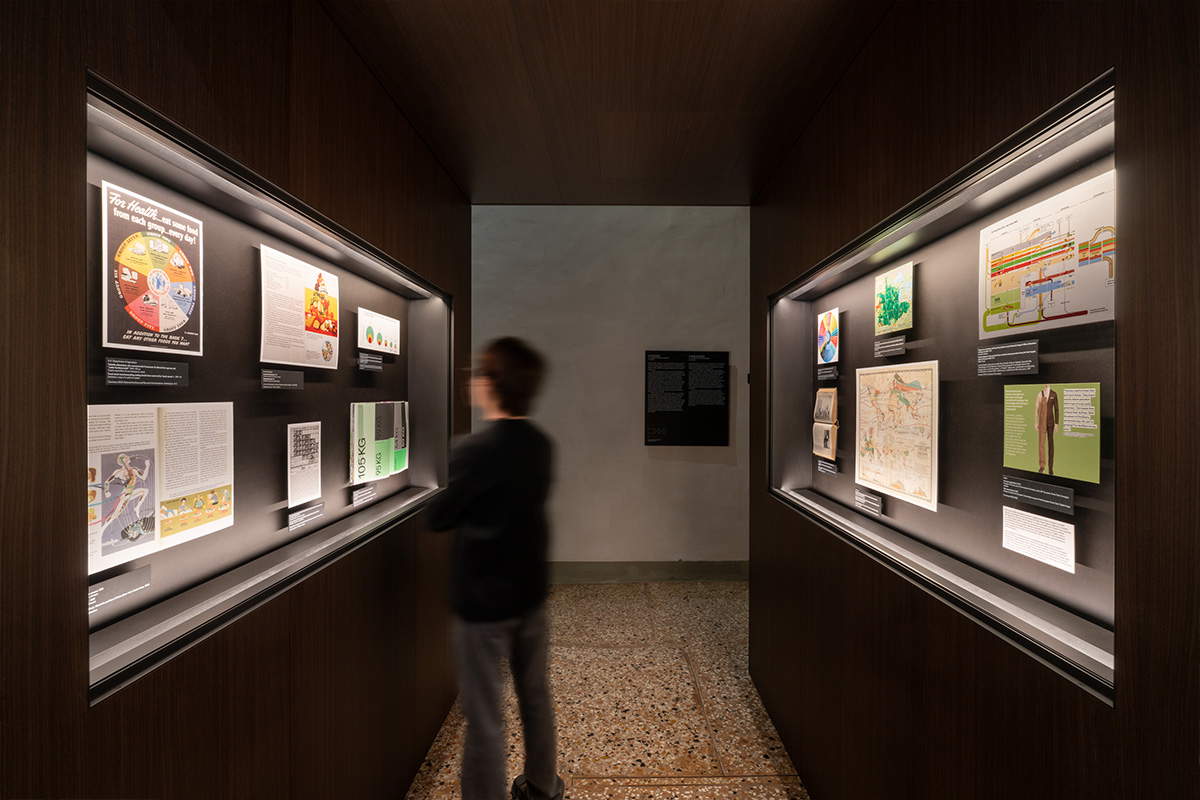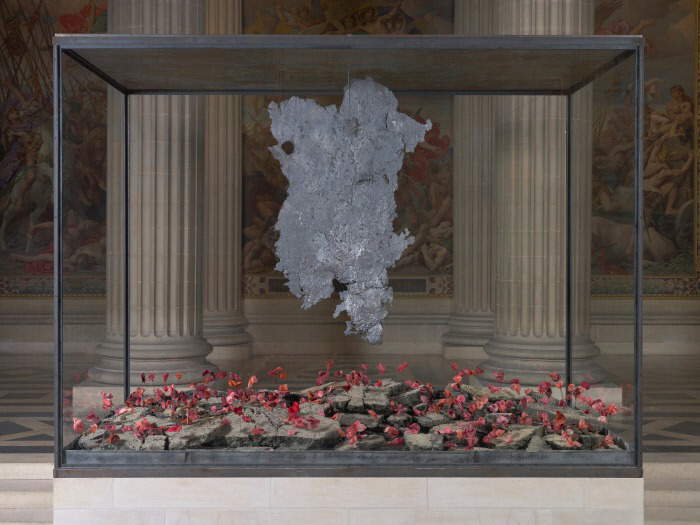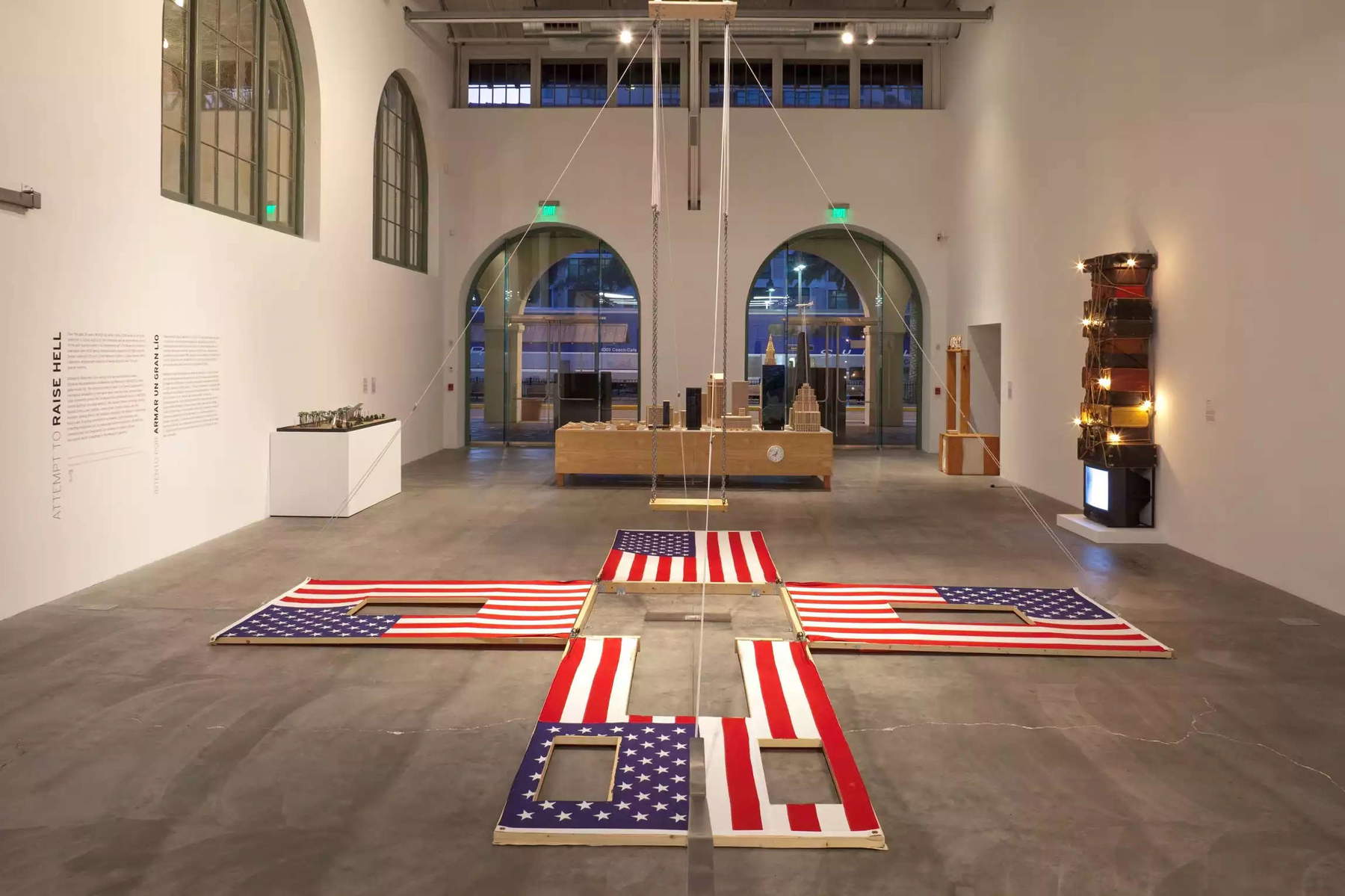Over the past four decades, numerous international artists have addressed the themes of peace and war in their works, often reflecting on the complexity of contemporary conflicts and their consequences. Examples include Ai Weiwei, with the installation Remembering, which addresses the theme of the desaparecidos, and Banksy, known for his pacifist activism and works such as Girl with Balloon; JR made famous the iconography of a little girl, Valeriia, in Déplacé-e-s, Lviv, Ukraine (2022); Shirin Neshat, in her extraordinary cinematic masterpiece Zanan-e Bedun-e Mardan/Women without Men (2009) showed us a denunciation of women’s violence and living conditions in Iran. Powerful messages have been disseminated through their works by Michael Rakowitz, Jenny Holzer, Marina Abramović, Keith Haring, Boris Mikhailov, Helen Marshal, to Michelangelo Pistoletto’s timeless Preventive Peace.
In the past, artists such as Pablo Picasso, with works like Guernica, and Bertolt Brecht, with poems and plays, have expressed their commitment to peace through their creations. It is well known that two years before World War II, in 1937, the most terrible censorship of artists took place in Germany. The works on display at the Entartete Kun st (Degenerate Art) exhibition, many of which were destined for destruction, and partially rescued and rediscovered in recent years.


Almost a century has passed since the tragic twentieth century: in this particular and complex historical moment in which we live we see the Middle East and Ukraine overexposed. Intrigued by the exhibition Diagrams at Cà Corner della Regina, and curated by Studio AMO/OMA, I noticed two experimental projects by cartographer Philippe Rekacewicz (France, 1960). Of these graphic elaborations, one is dedicated to Iran, and the other to Poland. These are two maps executed in 2009 and titled The World Seen from Tehran and The World Seen from Warsaw. Introducing the experience to the war conflicts of modern mankind is room N7 of the exhibition, located on the second floor and hosting the reconstructions of spatial analysis, interactive cartographic representations, remote sensing and 3D modeling, tools for mapping war scenarios in different areas of the planet through the use of new technologies.
Certain European countries, such as France, by cultural tradition protect historical memories by adapting and proposing dedicated contemporary art exhibitions born from scientific concepts that can define specific philological desinences. The site-specific work carried out by Anselm Kiefer inside the Panthéon in Paris, entitled Des coquelicots et une nuée de plomb (“Poppies and a Cloud of Lead”), can be considered in its own right as an example of conceptual philology. This installation stems from the artist’s reflection on the cruelties inflicted during World War I, and for this Kiefer draws from French writer Maurice Genevoix’s 1948 memoir Ceux de 14 (“Those of ’14”).
I consider it substantial to remind the Alpha generation, for proper participation in extended social curatorial and artistic reflections in Italy, of the exhibition model sought in Venice in 1974 by Carlo Ripa di Meana at the Biennale Internazionale d’Arte. Such a revolutionary model was specifically designed to give prominence and voice to Latin America and the geopolitical and social drama that swept through Chile. Among all the artists and intellectuals who engaged in that edition, we recall the presence of Roberto Matta.
The Chilean artist collaborated for this communicative, visual and ideological project with the BRP (Brigada Ramona Parra) collective from 1970 to 1972, a select group of muralists who wanted to openly demonstrate to celebrate the freedom of the Chilean people in the acronym they assumed “Brigada Salvador Allende.”
From a phenomenological perspective and sociological intuitive inquiry, we might find, in the present day, isolation of thought in a large number of artists who design by alienating or hibernating their content in unstable, abstract digital platforms such as social media (Instagram, Facebook, etc.), as especially young artists are preemptively accustomed to doing everything by instinctive filtered sectors directed to the mere market, a cut that is decidedly contrary to the idea that the artist can, in order to self-determine himself as such, be a complete all-round intellectual, foreign to the schemes of anthro-international possibilism, in a concrete and rational reality in which to dialogue analogically, between art and science, philosophy and art history, poetry and compositions of images, in “open” space-time continuum, and can self-determine as a “guarantor” to the colloquial relationship that every human being has or should assume with the “neighbor,” to the extent of 1 to 1, through experiences, emotions, reflections born of society and visually analyzing the chronicle.



There are many critical issues in art that we find in the media dissemination of artistic languages, as technique is often put on the back burner along with a lack of reflection on composition. Looking specifically at the social mood in the behavior of visual practitioners, unwitting followers of Muskism: we might scroll through their social media posts and observe variant replicas of “annihilated images” that are not associated with quotations, even though at first they might appear to be such. There is little self-critical judgment on the part of a large number of neophytes to art, and the aesthetic result of their products is often lacking or deficient in the corresponding message.
However, I believe that we can make the effort (indeed: we have a duty to do so) to educate the younger generation of artists to take a conscious look at how the compass of time has determined humanity between evolutions and involutions. I personally believe that art does not possess, unfortunately, the power to bring peace to the world, to end wars, but it must continue to offer itself in dialogue even with political issues to raise public awareness. To the above, a very emblematic artist I am thinking of is Vito Acconci, remembering him with his relational installation entitled, Instant House (1980): a balance swing, the viewer sits interacting with the work and the walls are raised, a structure that is transformed into a small house with effigies of the US and USSR flags. Exactly nine years later, in November 1989, the Berlin Wall was torn down, a momentous event filled with peace and hope (I was six years old). Awareness of time, of what we were and how we have become teaches us, first and foremost, a human science called history.
This contribution was originally published in No. 27 of our print magazine Finestre Sull’Arte on Paper, erroneously in abridged form. Click here to subscribe.
Warning: the translation into English of the original Italian article was created using automatic tools. We undertake to review all articles, but we do not guarantee the total absence of inaccuracies in the translation due to the program. You can find the original by clicking on the ITA button. If you find any mistake,please contact us.